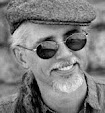Editorial: Cyclists, city can reach a solution
Once again the unnamed Courier editor pats the little cyclists on the head and explains that they're really not yet big enough to go on the adult rides. I have a bike, but I've used it three or four times in fifteen years. When I ride my moped I generally stay out of the bike lane, which is for slower traffic. My perspective on this issue is as a driver.
I have a bike, but I've used it three or four times in fifteen years. When I ride my moped I generally stay out of the bike lane, which is for slower traffic. My perspective on this issue is as a driver.
When there's a bike on the road, it legally owns the entire lane, just like a car. If cyclists really got exercised about this they could start riding according to the law -- in the middle of the lane -- and slow us all down.
Cities install bike lanes not to please the cyclists, but to improve traffic flow. The editor's idea that we'd be spending money on a "tiny percentage" of street users is exactly backward. It may be that the rhetoric of the cyclists encourages this misunderstanding, because for them its a huge safety issue. But that's no excuse.
The editor suggests Willis as an alternative to Gurley. I suggest the editor try driving his car (or his truck, more likely) from downtown to Yavapai College, or the Prescottonian, or the Peavine Trail using Willis.
Lost in this whole public debate is the proposal to place large landscape islands down the middle of Gurley St, eating up a lot of lane space and creating new opportunities for traffic entertainment. Have we learned nothing from the corner plantings around the square, or Rosser St?



